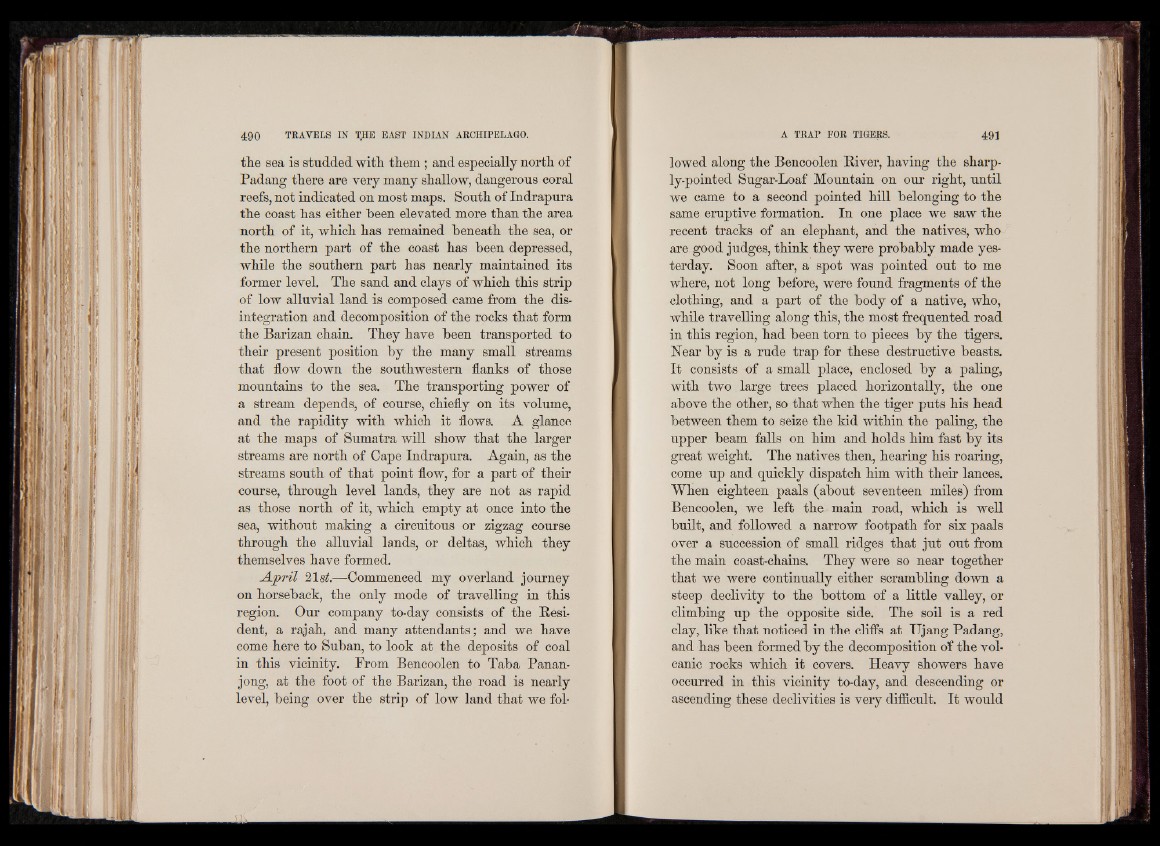
the sea is studded with them ; and especially north of
Padang there are very many shallow, dangerous coral
reefs, not indicated on most maps. South of Indrapura
the coast has either been elevated more than the area
north of it, which has remained beneath the sea, or
the northern part of the coast has been depressed,
while the southern part has nearly maintained its
former level. The sand and clays of which this strip
of low alluvial land is composed came from the disintegration
and decomposition of the rocks that form
the Barizan chain. They have been transported to
their present position by the many small streams
that flow down the southwestern flanks of those
mountains to the sea. The transporting power of
a stream depends, of course, chiefly on its volume,
and the rapidity with which it flows. A glance
at the maps of Sumatra will show that the larger
streams are north of Cape Indrapura. Again, as the
streams south of that point flow, for a part of their
course, through level lands, they are not as rapid
as those north of it, which empty at once into the
sea, without making a circuitous or zigzag course
through the alluvial lands, or deltas, which they
themselves have formed.
A p r il 21si.—Commenced my overland journey
on horseback, the only mode of travelling in this
region. Our company to-day consists of the Resident,
a rajah, and many attendants; and we have
come here to Suban, to look at the deposits of coal
in this vicinity. From Bencoolen to Taba Panan-
jong, at the foot of the Barizan, the road is nearly
level, being over the strip of low land that we followed
along the Bencoolen River, having the sharply
pointed Sugar-Loaf Mountain on our right, until
we came to a second pointed hill belonging to the
same eruptive formation. In one place we saw the
recent tracks of an elephant, and the natives, who
are good judges, think they were probably made yesterday.
Soon after, a spot was pointed out to me
where, not long before, were found fragments of the
clothing, and a part of the body of a native, who,
while travelling along this, the most frequented road
in this region, had been torn to pieces by the tigers.
Near by is a rude trap for these destructive beasts.
It consists of a small place, enclosed by a paling,
with two large trees placed horizontally, the one
above the other, so that when the tiger puts his head
between them to seize the kid within the paling, the
upper beam falls on him and holds him fast by its
great weight. The natives then, hearing his roaring,
come up and quickly dispatch him with their lances.
When eighteen paals (about seventeen miles) from
Bencoolen, we left the main road, which is well
built, and followed a narrow footpath for six paals
over a succession of small ridges that jut out from
the main coast-chains. They were so near together
that we were continually either scrambling down a
steep declivity to the bottom of a little valley, or
climbing up the opposite side. The soil is a red
clay, like that noticed in the cliffs at Ujang Padang,
and has been formed by the decomposition of the volcanic
rocks which it covers. Heavy showers have
occurred in this vicinity to-day, and descending or
ascending these declivities is very difficult. It would